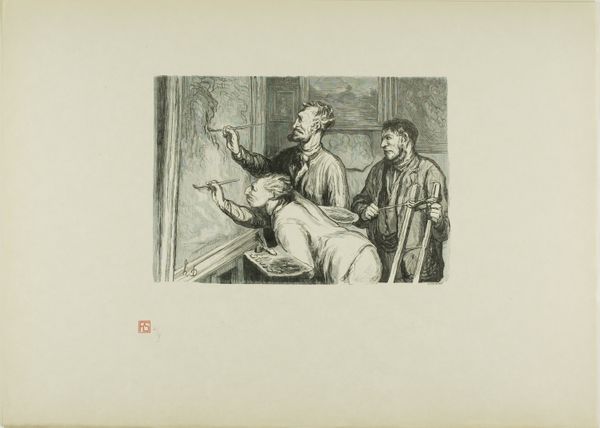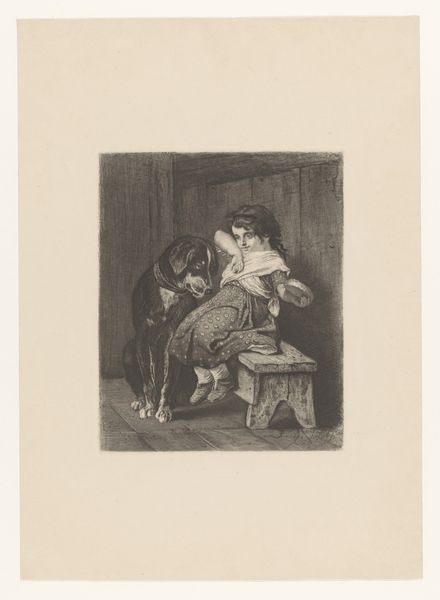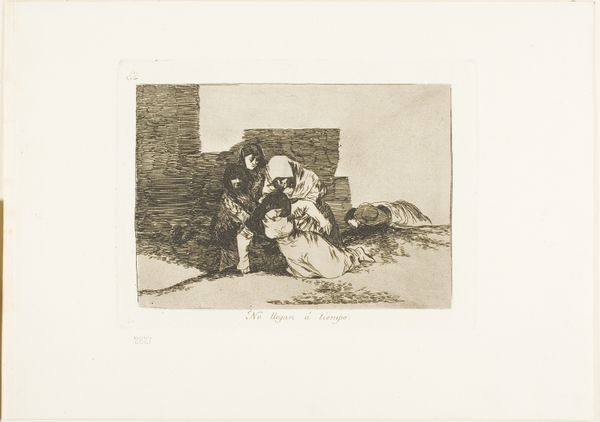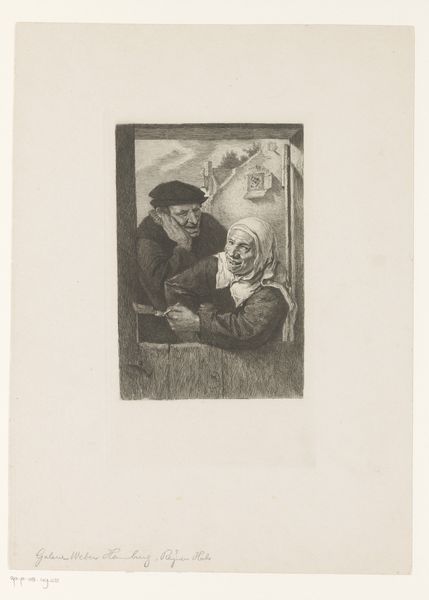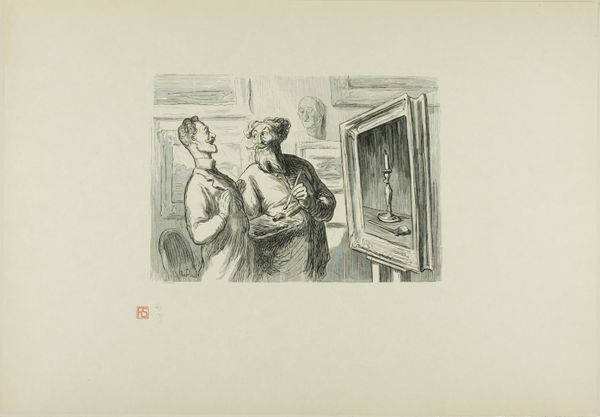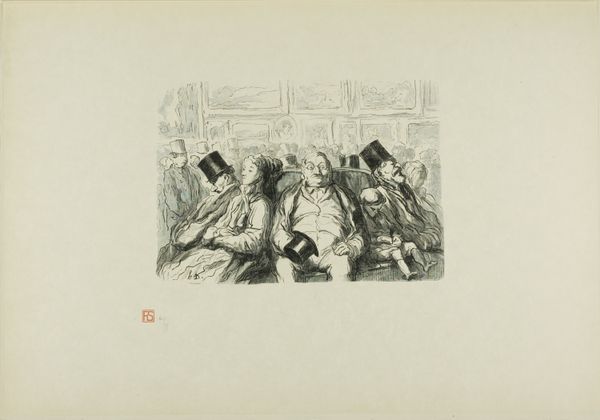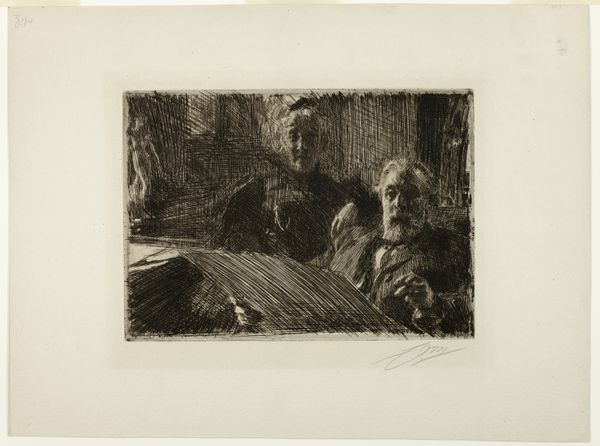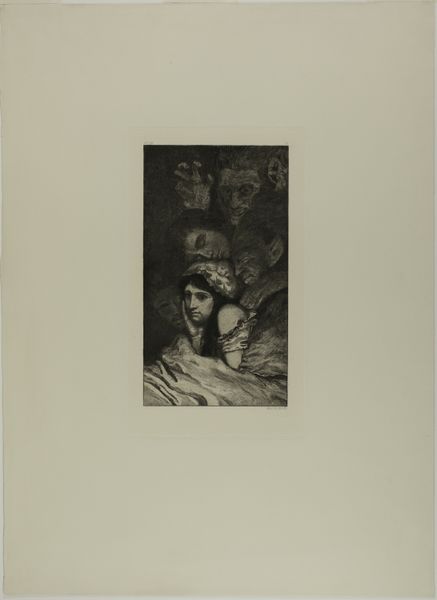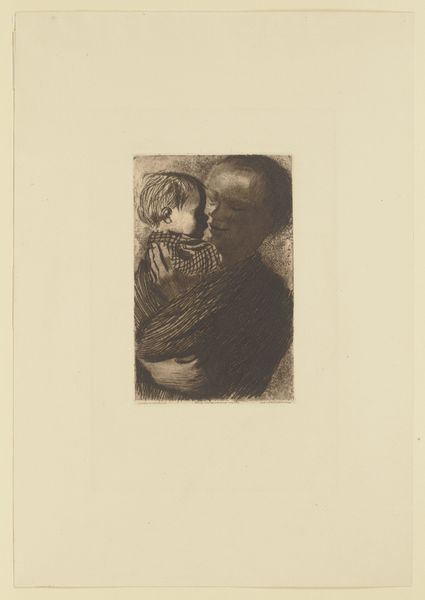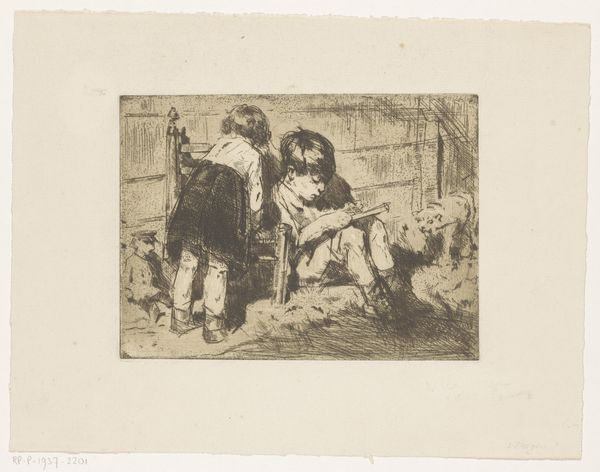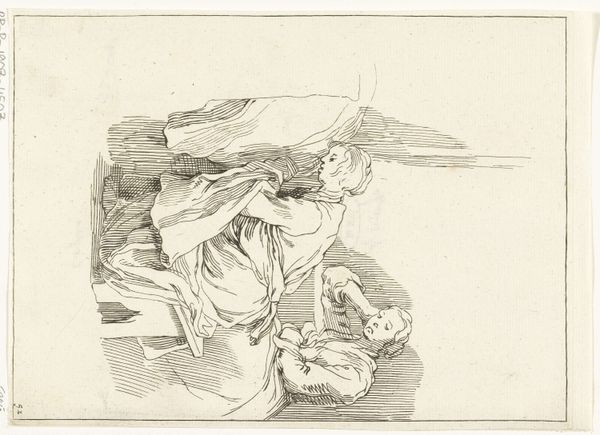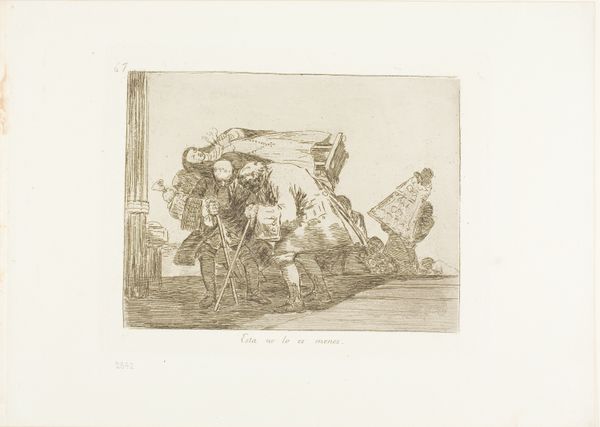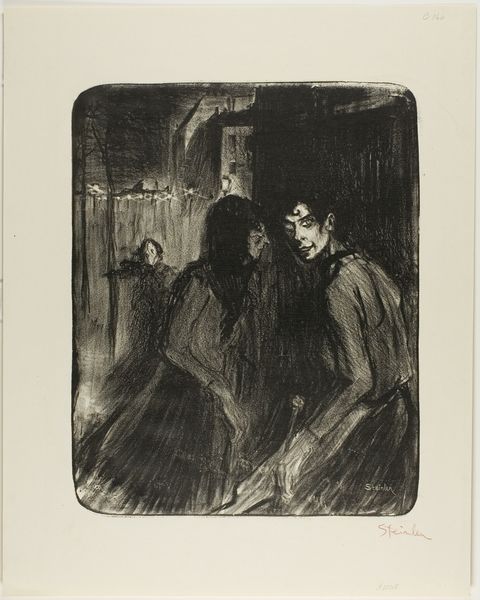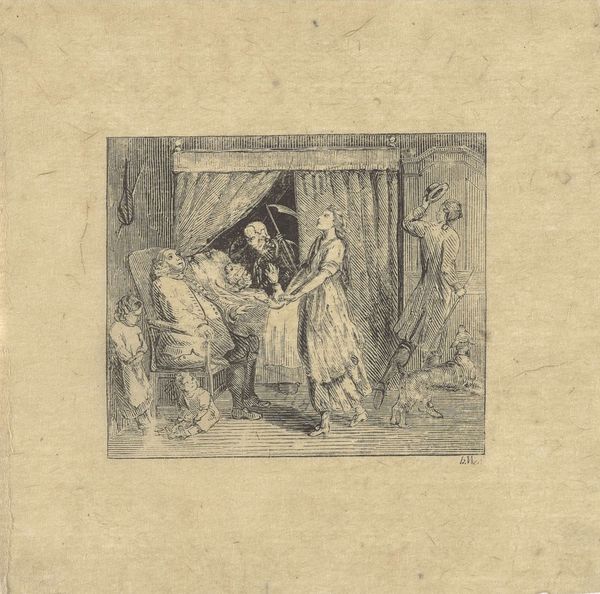
drawing, print, paper, engraving
#
portrait
#
drawing
# print
#
caricature
#
paper
#
pencil drawing
#
genre-painting
#
engraving
#
modernism
Dimensions: 161 × 227 mm (image); 316 × 457 mm (sheet)
Copyright: Public Domain
Editor: So, this is "Painter and the Bourgeois," potentially made between 1862 and 1920, by Charles Maurand. It's a print, an engraving on paper. It strikes me as a very pointed commentary, almost a caricature. What's your take on it? Curator: From a materialist perspective, it's interesting to consider the production of this print. Engraving, unlike painting, is inherently reproducible. This allows for wider dissemination of the image and its message. We need to consider what social and economic conditions made it possible. Was this image aimed at the rising bourgeois class? What was Maurand’s economic situation? Editor: That’s interesting, thinking about it being reproducible. I hadn’t considered that aspect and the implications of the artist creating something meant for wider distribution. The "caricature" tag makes me think the image aims to lampoon this emerging class; that the art critic isn’t the one truly making the work, he just consumes the finished product! Curator: Precisely. The medium itself – printmaking – enabled the critique of social class in ways a unique oil painting perhaps could not. It begs the question: who had access to prints at this time, and what did it mean to satirize wealth through a widely accessible, mechanically reproduced image? Do we see labor reflected back onto itself here? Editor: So, it becomes a tool in itself to critique, right? Like, the method is part of the message. The artwork’s statement could be weakened if it were presented as a painting, meant for private consumption of the rich... Curator: Exactly. It is crucial to look at how the method shapes meaning, impacting not just interpretation but reception as well. What better way to bring awareness of social and economic issues to the wider populous. Editor: Wow, this completely shifts how I view the work. I was focused on the content and the humorous style but I didn’t connect it with distribution method. Thank you. Curator: That’s the beauty of materialist perspectives, examining not just what an artwork represents, but *how* that representation is materialized.
Comments
No comments
Be the first to comment and join the conversation on the ultimate creative platform.
